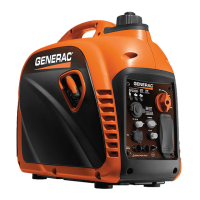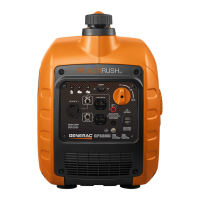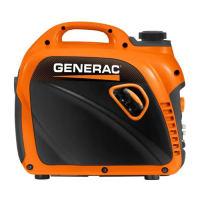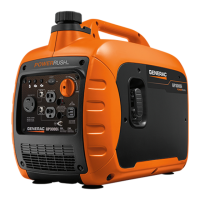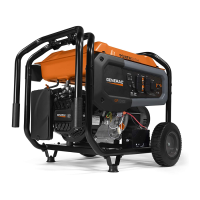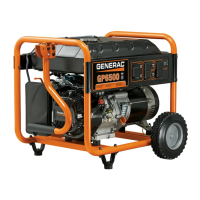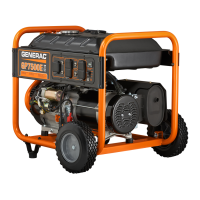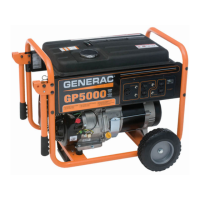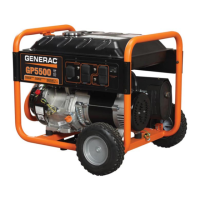Page 46
SPARK TESTER CLAMP
GROUNDED TO
CYLINDER HEAD
SPARK TESTER
SPARK PLUG
BOOT
Figure 10. Testing Ignition System
SPARK TESTER CLAMP
CONNECTED TO
SPARK PLUG
SPARK TESTER
SPARK PLUG
BOOT
Figure 11. Checking Engine Miss
4. Crank the engine rapidly. Engine must be cranking at
350 rpm or more. If spark jumps the tester gap, you may
assume the ignition system is working properly. Repeat
on remaining cylinder spark plug.
5. If spark jumps the tester gap intermittently, the problem
may be in the Ignition Magneto.
RESULTS:
Refer back to the Flow Chart
TEST 26 – CHECK SPARK PLUGS
PROCEDURE:
Remove spark plugs. Clean with a commercial solvent.
DO NOT BLAST CLEAN SPARK PLUGS. Replace
spark plugs if badly fouled, if ceramic is cracked, or
if badly worn or damaged. Refer to specifications in
the front of this manual for proper replacement spark
plugs and spark plug gaps.
Figure 12. Setting Spark Plug Gap
NORMAL MISFIRES
PRE-IGNITION DETONATION
Figure 13. Spark Plug Conditions
RESULTS:
1. Clean and regap or replace sparks plug as necessary.
2. Refer back to the Flow Chart.
TEST 29 – CHECK CARBURETION
PROCEDURE:
Before making a carburetion check, be sure the fuel sup-
ply tank has an ample supply of fresh, clean gasoline.
Check that all shutoff valves are open and fuel flows
freely through the fuel line.
Make sure the choke operates properly.
If the engine will not start, remove and inspect the spark
plug. If the spark plug is wet, look for the following:
• Overchoking.
• Excessivelyrichfuelmixture.
PART 3
DC CONTROL
SECTION 3.3
DIAGNOSTIC TESTS
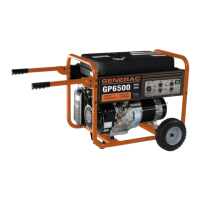
